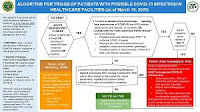The 2nd Court of Appeals in Fort Worth ruled in the Tinslee Lewis case that (1) the actions of the private nonprofit pediatric hospital where pediatricians are treating Tinslee is a "state actor" and therefore (2) Tinslee's mother has pleaded a plausible due-process claim under the Constitution.
Note: The links below aren't working for me. If they are changed, I will update. Meanwhile, Thad Pope has posted the PDFs
on his blog.
- Majority opinion (pdf)
- Dissenting opinion (pdf)
The dissenting opinion of Justice Gabriel is well worth reading. She correctly points out that the private, nonprofit pediatric hospital here was engaged in private conduct that did not give rise to any of the traditional circumstance that would turn private conduct into state action.
She also correctly takes the majority to task for writing a 150-page opinion that all but decides the merits of the constitutional due-process claim raised by Tinslee's mother. As Gabriel points out, the opinion goes far, far beyond the question presented to the court:
The procedural posture of this case presents a very narrow question that is further limited
by the applicable abuse-of-discretion standard: Did Mother raise a bona fide issue as to whether CCMC—a private hospital—is a state actor that violated Mother’s due process rights, thereby showing a probable right to relief on her § 1983 claim? This is the operative question this court has been asked to answer; thus, our answer should be so limited. [Dissenting opinion of Justice Gabriel at 2]
Instead, the majority pretty definitively (and inappropriately) purports to decide the constitutional merits of the case, coming close -- according to Justice Gabriel -- to rendering an advisory opinion.
I may be biased. (Disclaimer: I helped to write the Texas Advance Directives Act in 1998-99, including the provision -- § 166.046 of the Tex. Health & Safety Code -- at issue in this case.) But I think Justice Gabriel nailed it. And "on the merits" of the due process argument, which the majority opinion all but decides for the benefit of the trial court on remand, I have three reactions. (1) The statute provides more due process than was ever available before TADA was enacted. (2) The claim that the statute does not provide for judicial review is correct as far as it goes, but this litigation is itself proof that judicial review is available under Texas law. (3) If more due process is required, the Legislature can fix the law with a few changes when it comes back into session in 2021.


















